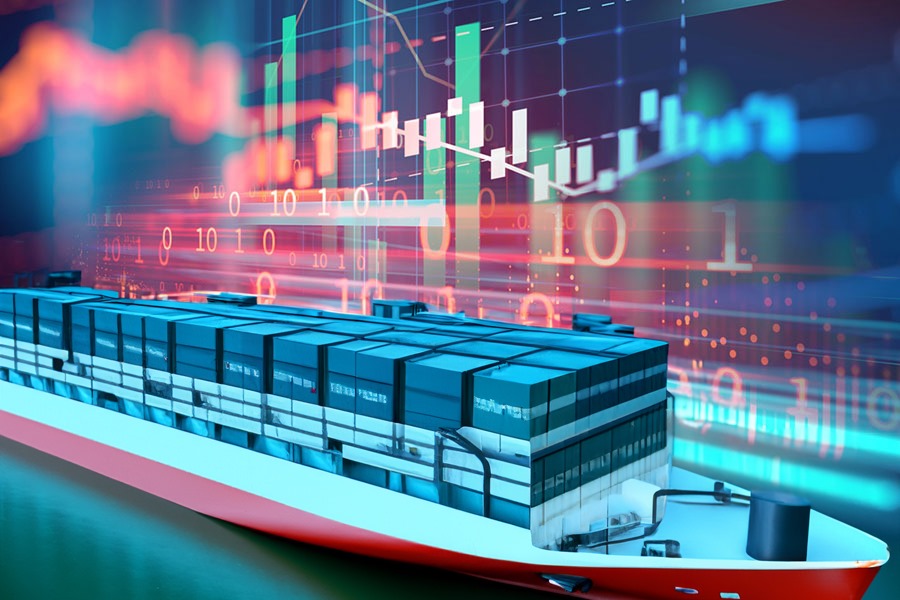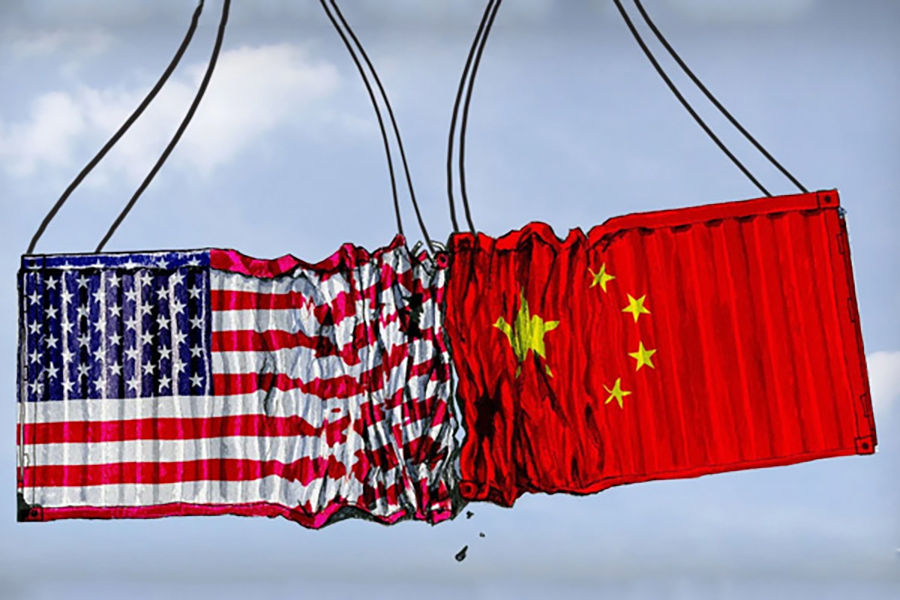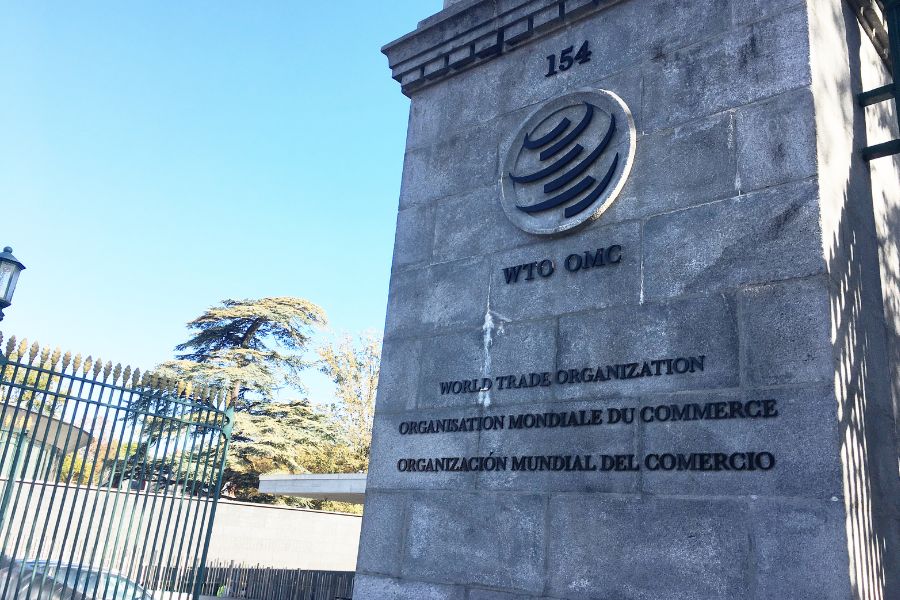Global trade in 2020: Continued headwinds, new momentum
• The World Trade Organization (WTO) noted that world trade is continuing to face strong headwinds in 2020 after already growing more slowly than expected in 2018 and 2019.
• In 2019, the volume of global trade of goods and services grew at its slowest pace in a decade, by just 1.5%. Global trade went into recession in end-2018, exiting negative territory only in the fall of 2019. Latest monthly trade data shows that in August, global trade of goods in volume terms stood at the lowest level since November 2018.
• On the extreme scenario WTO economists have attempted to quantify a worst-case scenario. This would lead to a reduction in world GDP in 2022 of about 2% and a reduction in global trade of about 17% compared to baseline projections (WTO Report).
• As of 2019, e-commerce sales make up more than 12% of global retail sales, and this figure is estimated to exceed US$3.5 trillion by next year, according to the Global Shipper’s Alliance.

The World Trade Organization (WTO) recently noted that world trade is expected to face strong headwinds in 2020 after already growing more slowly than expected in 2018 and 2019. International trade is weighed down by several factors, including new tariffs and sanctions affecting widely traded goods, weaker global economic growth, volatility in financial markets and tighter monetary conditions in developed countries.
Heightened trade tensions cannot explain all of the trade slowdown but they have undoubtedly played a significant role as consumers and firms alike have anticipated new trade measures taking effect. As nearly every unilateral trade measure is accompanied by a retaliatory act, trade tensions have wide international repercussions. Similarly, foreign investment control has become a top enforcement priority throughout several jurisdictions thereby slowing down the creation of new trade relationships.
Figure: Global Trade Size in US$ trillion
Source: ITC Trade Map, 2019
In 2019, the volume of global trade of goods and services grew at its slowest pace in a decade by just 1.5%. Global trade went into recession by end-2018, exiting negative territory only in the fall of 2019. Latest monthly trade data shows that in August, global trade of goods in volume stood at the level lowest since November 2018. The automotive and semi-conductor sectors particularly drove this slump. The depth of the slowdown will be stronger in countries where services depend more on manufacturing. For example, in Germany, 26% of total national services inputs are used as inputs in industry, against 16% in France, 14% in the U.S. or 11% in the UK.
The current trade projections reflect downgraded GDP projections for Asia, North America and Europe mostly due to macroeconomic parameters including the plummeting effect of expansionary fiscal policy in the US, the phase-out of monetary stimulus in the Euro area and the ongoing economic rebalancing of the Chinese economy away from manufacturing and investment and toward services and consumption. Monetary authorities like central banks have put further rate hikes on hold in response to soft economic data, but changes in monetary policy take some time to be felt. Trade measures enunciated in the past years are also reflected in underlying GDP assumptions, thus any additional intensifying measures of trade tensions has to factored in.
On the extreme scenario WTO economists have attempted to quantify a worst-case scenario. This would lead to a reduction in world GDP in 2022 by about 2% and a reduction in global trade by about 17% compared to baseline projections (WTO Report). For comparison, global GDP fell by about two percent and global trade dropped by about 12% in 2009 following the financial crisis.
Other risks to the trade outlook are more difficult to quantify, yet significant for explaining the global trade movement. For example, the effects of Brexit will depend on the nature of any agreement that might be reached between the United Kingdom and the European Union, with impacts mostly confined to these economies. Lower investment in the UK is likely in most foreseeable Brexit scenarios, which would tend to reduce productive capacity over time.
Some Glimpse of Hope: Tech Trade
Disruptive technologies are fundamentally transforming existing global value chains by shifting cross-border flows of goods and services. However, the net effect on total trade flows remains arcane and esoteric. It is anticipated that some of these new technologies will remove trade frictions and ease off or facilitate more flows, while others might completely alter the production process as a whole. It is imperative to identify the two major impacts that new digital technologies bring about and their respective implications. On one hand, digital advances such as blockchain solutions and e-commerce platforms could significantly lessen transaction costs and subsequently enable more efficient flows of goods and services across borders.
According to the WTO, trade costs on goods can be broken down into several components, with transport costs accounting for the largest share at 37%, information and transaction costs at around 20% and logistic costs at 11%. By effectively lowering the above trade related costs, the global movement of goods is expected to grow an additional 2 percentage points per year over the next decade, relative to the baseline. This development is particularly evident in the logistics industry, where internet of things and blockchain technologies have been adopted for real-time tracking of shipments. Blockchain-enabled smart contracts could benefit streamline administrative procedures and prevent unnecessary delays across borders, reducing transportation costs. Several effective pilots have demonstrated that blockchain technologies have great potential in eliminating the friction of customs and paperwork that would otherwise slow down trade flows.
Likewise, digital platforms open up opportunities to access goods and services across borders. By connecting global consumers and producers through a platform marketplace and offering a variety of selections, global e-commerce sites have facilitated substantial trade flows, especially in emerging countries. As of 2019, e-commerce sales make up more than 12% of global retail sales, and this figure is estimated to exceed US$ 3.5 trillion by next year, according to the global shipper’s alliance. There would be a shortening of global value chains and a decline in global trade of final products, since individual parts and products would increasingly be manufactured in the proximity of end consumers. While 3D printing technology is predicted to reduce total trade in manufactured goods over time, flows of services and data such as design, education and software could increase.
As per the estimates of Morgan Stanley global growth and trade are expected to recover in 2020 as trade tensions and monetary policy ease. Easing trade tensions, as the key factor in the global downturn will reduce business uncertainty and make policy stimulus more effective. The overall impact on net trade flows is still ambiguous, but the trends are worth observing. In addition, this could reduce operational risks in a product’s value chain, hence potentially benefiting many companies exposed to such risks when they trade across borders.













Leave a comment